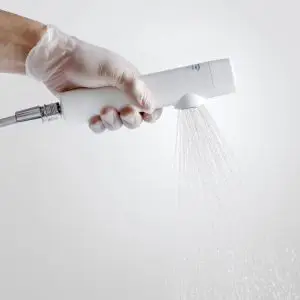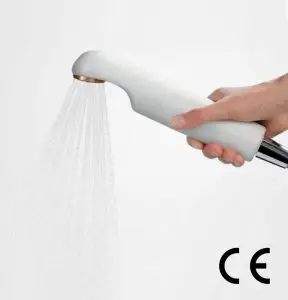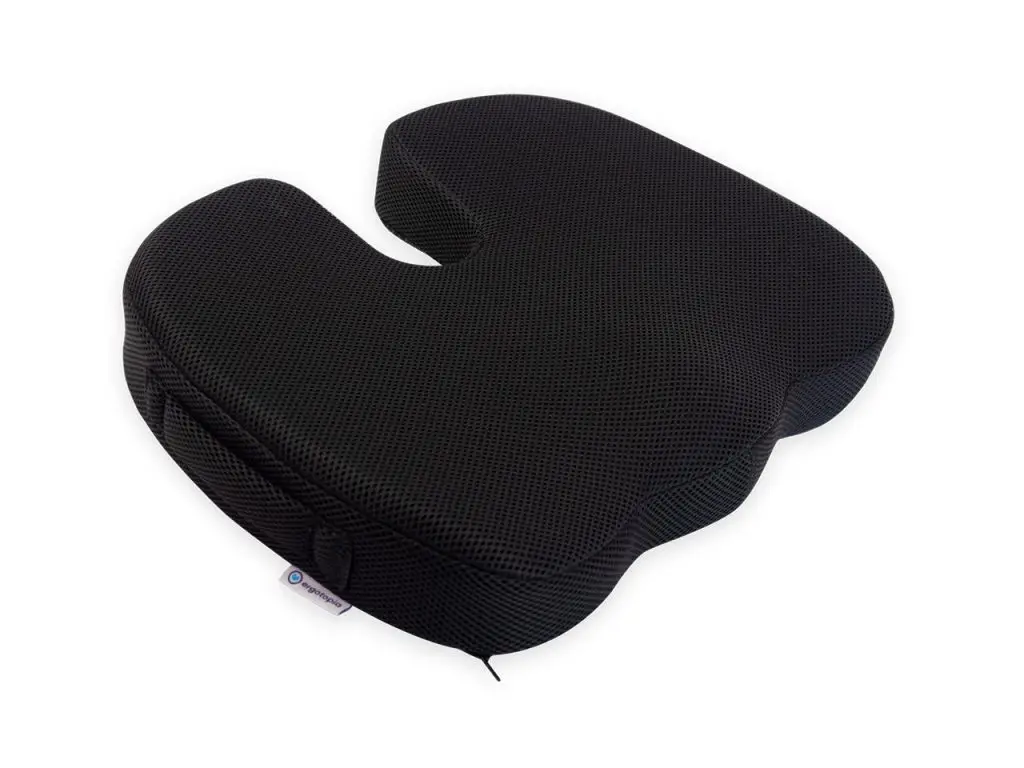We are updating our website to provide you with an even better and clearer source of information in the future. Please excuse the current chaos - we are working on it!
When the hair is removed, the fistula will heal.
1965 Peter H. Lord and Douglas M. Millar, pit picking inventors
Period. This actually says everything important: without hair in the buttock crease, there would be no Pilonidal Sinus. And ingrown hairs are almost always responsible for wound healing problems after pilonidal sinus surgery, less often loose hairs. This is why this page also begins with an article on hair removal (epilation).
Nevertheless, general measures for wound treatment and wound care are important. On this page you can find out which home remedies, behavioral tips, medication and dressing materials are recommended. We welcome additions and improvements to this list, which naturally does not claim to be exhaustive.
Pilonidal Sinus without treatment? Treatment without surgery?
Does a Pilonidal Sinus heal itself? Unfortunately, no. A permanent cure can only be achieved by surgical removal. The decision for the best method is in your hands and should be made carefully.
If you are currently only experiencing mild discomfort or have just recovered from a painful inflammation, you are understandably not motivated to undergo surgery. Especially if you have read or heard about discouraging experiences. But remember: surgery during the symptom-free interval is technically easier and minimally invasive concepts can be implemented effectively. The next time you have an inflammatory flare-up, you'll wish you'd already had the treatment.
Hair Removal
Where do the hairs come from that you find in the cave of a Pilonidal Sinus ?
- The hair mainly comes from hair roots in the area of the gluteal fold.
- New studies show that hair from the head can also be found in the fistula ducts, hair from the back only rarely. Short, freshly cut hair from the neck seems to penetrate the skin most easily.
- Hard to believe: hair from partners, family members or pets is rarely found in coccyx fistulas!
According to both our personal experience and large meta-analyses, a hair-free buttock crease reduces the risk of healing disorders and recurrences after surgery. Many supposed relapses are in fact poorly healed surgical scars(type IV fistulas), which could have been avoided by consistent hair removal in the early phase after an operation. The penetration of loose hair from other parts of the body can best be prevented by covering it with a closed bandage.
Depilation: shaving, depilatory cream
Procedures that only remove the visible part of the hair, the hair shaft (shaving, depilatory cream) are called depilation. They last for about 2 weeks and by their very nature cannot affect the hair root in depth and thus the risk of a real recurrence. Contrary to popular belief, depilation does not change the growth rate, so shaved hair does not grow back faster or thicker.
Epilation: laser hair removal, electro-epilation
With real epilation, the hair bulb is also removed and thus an effect is achieved for at least 6-8 weeks, as with plucking, waxing and sugaring. With laser, IPL and electro-epilation, the growth zone (germination zone) is also inactivated to achieve a permanent effect.
Shaving - Useful, indifferent or harmful?
The 2016 WHO recommendation says: "Shaving is strongly discouraged at all times, whether preoperatively or in the operating room." - In a healthy person, we see it the same way: there is no medical reason to shave in any part of the body.
However, we consider shaving to be indispensable before the operation Pilonidal Sinus, and preferably already during the planning stage. Why? Especially in densely haired patients, the true extent of the Pilonidal Sinus and the number and localisation of the pits can only be assessed in the shaved state. We use conventional razors for this. This allows us to shave directly on the wound, even in the depth of the buttock crease and in combination with Octenisept as a disinfectant, without spreading cut hair fragments over the wound.
For laser epilation, which is almost always the first step of the operation, the hair must be cut exactly at skin level so that there is no superficial burning of the skin.
In other operations and in other regions of the body, the
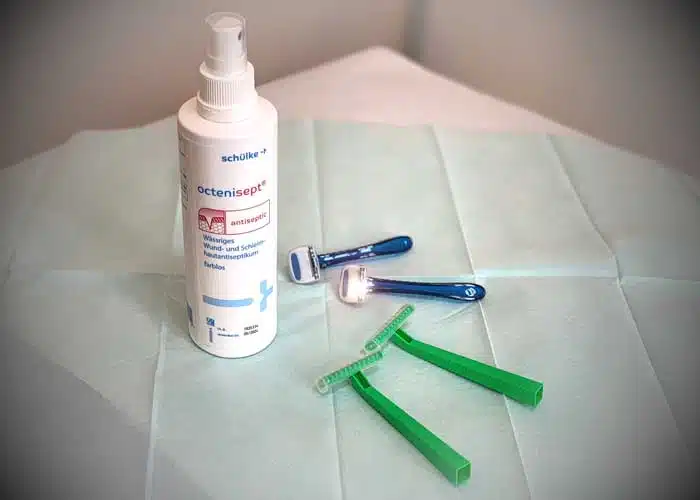
After the operation of a Pilonidal Sinus we also consider the shaving of the surroundings of the wound as essential. 90% of all problems are caused by mechanical irritation of the wound by the surrounding hair.
We therefore recommend shaving until the wound is closed and the scar is stable. In the early phase of wound healing, the scar tissue is still soft and vulnerable, so that hairs can reattach.
The easiest way to shave is with simple disposable razors ("hospital razors", e.g. from Wilkinson®) after spraying with an alcohol-free antiseptic (e.g. Octenisept®). The viscous consistency of this agent ensures that the razor glides effortlessly over the skin and the shaved stubble does not fall into the wound. The antiseptic effect prevents skin irritation. In hard-to-reach areas, a bikinizone razor can be helpful. The use of clippers or beard trimmers should also work. I have received positive feedback from patients especially about precision trimmers such as those from Braun or Beurer.
Tips for a successful shave can be found in our video:
By clicking on this link button you leave our website and use the offer of Youtube. We have no influence on the collection of personal data and its processing and storage in computer centres outside the validity of the DSGVO.
With conventional epilation, the hair is pulled out with a rotating tweezer system (e.g. Braun Silk-épil, Philips SatinPerfect). This effect can also be achieved with heated wax strips or a lightly caramelised paste of sugar, water and lemon juice (sugaring ). The latter is considered a particularly natural and gentle method.
Pulling on the hair causes the hair to break off just above the hair root, the root and growth zone are not removed. Although there will be no hair on the outside for a few weeks, the hair will grow back again and again.
This epilation technique is mainly suitable for cosmetic hair removal. It seems unlikely to me that it can prevent the formation of a Pilonidal Sinus . In contrast, for post-operative treatment after radical surgery, depilation may also be a means of preventing the hair from growing from the side into the still open surgical wound.
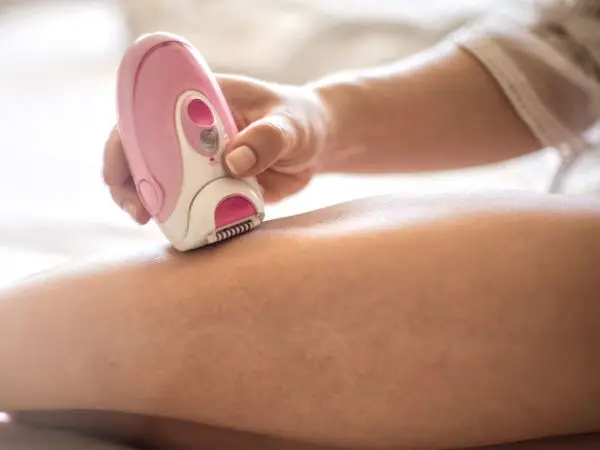
Chemical hair removal
Depilation with depilatory cream is a widely used and painless option for temporary hair removal that produces less unpleasant stubble than shaving. It is based on the splitting of disulphide bridges in and on the hair by thioglycolates. The hair shafts are thus loosened to about 1 - 2 mm under the skin. Sharp stubble as with shaving is avoided.
The commercially available preparations differ essentially in the concentration of active ingredients and carrier substance, care substances as well as fragrances and preservatives. In the area of the buttock fold, one would resort to products explicitly approved for the intimate area.
The cream is applied and left for about 10-15 minutes until it is washed off again or scraped off with a scraper. During this process, the hairs fall out. It is advisable to test a preparation on a less sensitive area before treating sensitive areas such as the buttock crease.
This avoids skin irritation, which in extreme cases can lead to sores such as burns or abrasions. The use of hair removal cream should not be combined with waxing or mechanical epilation, as these methods make the skin more sensitive.
Laser Hair Removal
Even the best surgical technique cannot guarantee a 100% success rate. If a fistula occurs again after an operation, either new "pits" have formed or hairs have drilled into the less stable scar tissue. This problem can be prevented if the hair roots in the critical area are permanently inactivated by light energy. A recent study showed a halving of the recurrence rate after surgery from 19.7% to 9.3% after laser hair removal.
Electric hair removal (electro-epilation, electrolysis)
- In needle epilation, a fine wire is inserted into the hair follicle parallel to the hair shaft and the hair root at the bottom of the follicle is destroyed with an electric current. The loosened hair is plucked out with tweezers.
- In medical electrolysis treatment, the hair root is sclerosed by a short-wave pulse, which is also applied via an inserted probe.
These methods are considered by the American FDA to be the only technique of truly permanent hair removal. The risks include infection of the hair follicle. As with laser epilation, repeated treatments must be performed.
This treatment requires profound training and experience and is not available nationwide. In addition, there are - quite rightly - no therapists who work for the fee of € 6.45 offered by the statutory health insurance via EBM number 10340 (epilation by electrocoagulation).
On the website of the professional association you can check if a therapist in your region offers this technique. It has advantages especially for very light and/or delicate hair that does not respond optimally to laser treatment.
Conclusion: Effective method for hair reduction, depending on availability, self-payment.
Washing and disinfection
Wound? We learn to disinfect first, even as children. It is less well known that disinfectants and antiseptics not only kill bacteria, but also damage the normal skin flora, leukocytes and fibroblasts involved in wound healing. Therefore, there is no good reason for disinfection without a wound or during normal wound healing. Colonization with bacteria in the region of the gluteal fold and anus is unavoidable and not harmful. Only in the case of infection, i.e. pathogenic bacterial growth in the wound, can antiseptics be useful in justified individual cases. Today, the skin flora is better referred to as the microbiome. The term "flora", after the Roman goddess of flowers and youth, refers to the plant kingdom, to which bacteria do not belong.

Washing
Washing and showering - with tap water
"Thoroughly rinse the wound daily (several times)". - This is the most commonly reported recommendation for wound care. What does science say?
A 2012 Cochrane analysis found different types of wound irrigation (tap water vs boiled water vs saline vs no irrigation) were equivalent.
The Robert Koch Institute (RKI) nevertheless comments as follows: "Every rinsing fluid must be sterile. Tap water is not free of microorganisms. Only sterile solutions may be used to rinse wounds."
What the RKI says is the law.
Nevertheless, I feel I can comment on these opinions:
- Irrigation of the wound in the actual sense is rarely necessary after Pilonidal Sinus surgery. Wounds left open almost never become infected. In the case of a sutured wound, irrigation is not sufficient in the event of infection. The wound must usually be opened surgically.
- The recommendation refers to wound care in homes, i.e. of problem wounds in elderly and/or sick patients. The patient with Pilonidal Sinus is usually young and healthy.
- The gluteal fold never becomes permanently sterile. Neither are the patient's underpants. When it comes to the pragmatic question of whether showering, i.e. general body hygiene, is permitted after surgery, I don't think you have to be more pontifical than the Pope.
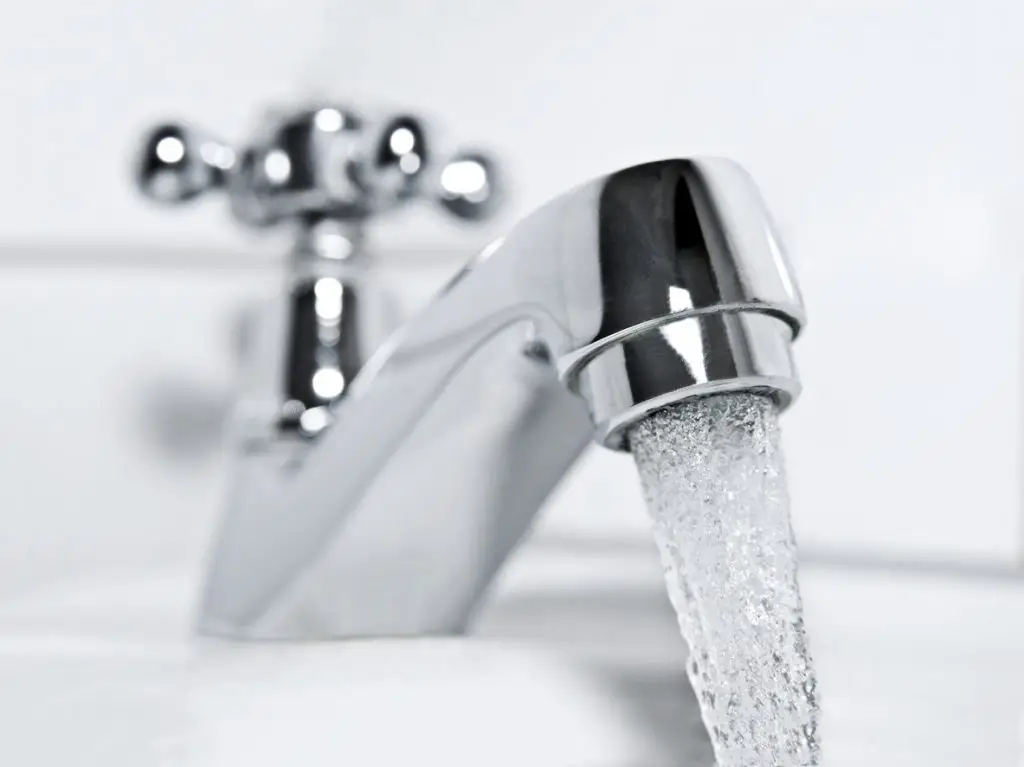
Washing and showering - with tap water and bacteria filter
Improve water quality: The German Society for Hospital Hygiene (DGKH) says on the subject of tap water: "When using terminal sterile filters at the water outlet, drinking water ... can achieve the necessary microbiological purity. However, these filters should be changed daily...".
Suitable filters are available as disposable products or in rental systems with included reprocessing. The best solution is a terminal system as a handpiece at the shower. This seems to me to be a recommendable and practicable solution.
It is not necessary to "clean" the wound. However, once or twice a day we would recommend showering off secretion residues, loose hairs and exfoliated horny scales of the skin in the fold of the buttocks.
"Coccyx Pillow"
The coccyx is by no means a useless extension of the pelvic bones. Numerous ligaments and muscles start here. Incorrect posture does not necessarily lead to Pilonidal Sinus, but to pain when sitting. Suitable seat cushions lead to a redistribution of the weight load and can alleviate such pain.
In the aftercare following Pilonidal Sinus surgery, such a cushion can make sitting easier.
Alternatives outside conventional medicine
Grandma's home remedy: curd soap
A block of curd soap used to belong in every household. And many can still remember that our grandmothers praised a bath in hot soapy water as a panacea for inflammation.
Soap is chemically the sodium salt of fatty acids. Some brand names (Palmolive®) are reminiscent of the fats used, palm and olive oil. In curd soap, the soap core is separated by adding common salt to form a soap solution.
Curd soap is alkaline and has a good cleansing effect. However, this pH value attacks the acid mantle of the skin. The advantage of curd soap is that it is free of fragrances and dyes and may therefore cause fewer allergies.
Therapeutic efficacy not proven: A search of the PubMed medical database revealed no evidence that curd soap has a healing effect.
Only sporadic, unproven recommendations can be found. In the prevention of wound infections after injury proved saline superior to washing with soap.
Conclusion: The nostalgic curd soap bath cannot be recommended on a scientific basis.
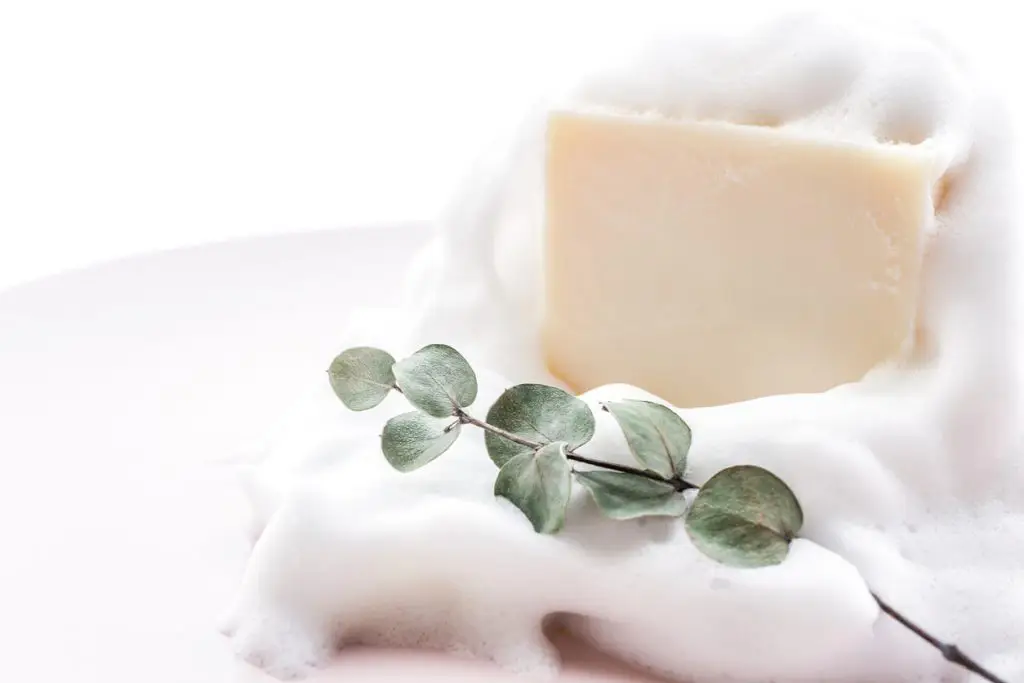
Literature on wound treatment
- Fayne, R., Perper, M., Eber, A., Aldahan, A., & Nouri, K. (2017). Laser and Light Treatments for Hair Reduction in Fitzpatrick Skin Types IV-VI: A Comprehensive Review of the Literature. American Journal of Clinical Dermatology, 19(2), 237-252.
- Hendricks, K., Nxumalo, C. T., Makgobole, M. U., Ghuman, S., Jacobs, D., & Mpofana, N. (2023). Evaluating the effectiveness of laser hair reduction using a home use laser in comparison to a Diode laser. PloS one, 18(5), e0286162. https://doi.org/10.1371/journal.pone.0286162
- Ommer, A., Iesalnieks, I. & Doll, D. S3 guideline: Pilonidal sinus. 2nd revised version 2020. coloproctology 43 (Suppl 1), 25-73 (2021). https://doi.org/10.1007/s00053-020-00488-z
- Pronk, A., Eppink, L., Smakman, N., & Furnee, E. (2017). The effect of hair removal after surgery for sacrococcygeal pilonidal sinus disease: a systematic review of the literature. Techniques in Coloproctology, 22(1), 7-14.
DR. BERNHARD HOFER & FLORIAN LIEBL
Specialists in Visceral Surgery and Proctology - PartG mbB
Brienner Str. 13, D-80333 Munich
- info@darmsprechstunde.de
- Monday - Friday: 08.00 - 13.00 and 14.00 - 18.00
- and by arrangement
- Saturday, Sunday, Holiday : closed
- Please also note our instructions in the title of this website and on our telephone announcement.
© 2024 Proctology Practice Munich

